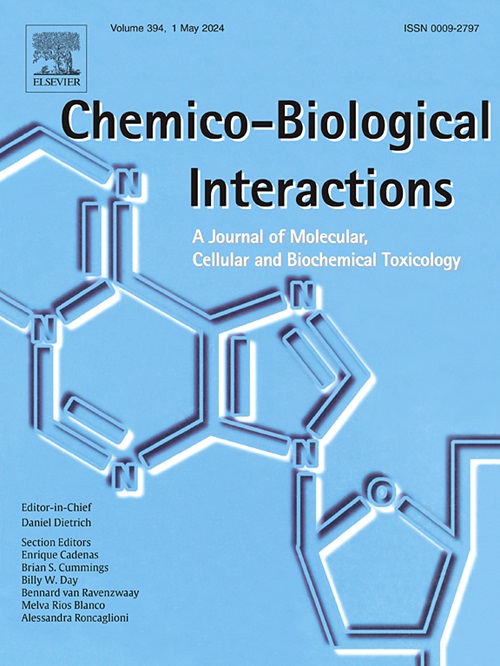高脂饮食和蔗糖诱导的2型糖尿病大鼠肾脏中β -谷甾醇对TGF-β1/Nrf2/SIRT1/p53介导的信号通路影响的分子机制
IF 4.7
2区 医学
Q1 BIOCHEMISTRY & MOLECULAR BIOLOGY
引用次数: 0
摘要
糖尿病肾病是糖尿病的一个严重问题,高脂肪饮食加剧了糖尿病肾病,这促使人们需要干预。我们实验室之前的研究表明,β-谷甾醇是一种有效的植物甾醇,通过参与胰岛素代谢信号通路具有抗炎和降血糖功效,但其在抗氧化信号通路中的作用在减轻氧化应激和炎症相关的糖尿病肾病中起着至关重要的作用,突出了其作为管理这种使人衰弱的糖尿病并发症的潜在治疗靶点的重要性尚不清楚。本研究旨在通过多种综合生物信息学分析,探讨β-谷甾醇(BSIT)在高脂饮食(HFD)和蔗糖诱导的大鼠糖尿病肾病(DN)中对TGF-β1/Nrf2/SIRT1/p53信号通路的调控作用及其分子机制。我们使用了多种综合方法,如途径预测、药物-蛋白质相互作用、功能注释分析和分子对接技术。此外,在高脂饮食(HFD)和蔗糖诱导的糖尿病肾病的肾脏中,对BSIT的体内生化谱、抗氧化和炎症信号分子的基因和蛋白表达进行了分析。计算研究揭示了β-谷甾醇与关键蛋白的结合亲和力和相互作用模式,提示其可能调节TGF-β1/Nrf2/SIRT1/p53信号通路。体内研究结果验证了计算预测,显示BSIT在减轻糖尿病肾病和相关并发症方面的多方面作用,包括调节脂质代谢、对抗氧化应激和炎症。这些发现强调了BSIT通过保持细胞活力、调节细胞死亡、增强抗氧化防御和稳定代谢过程的治疗潜力。我们的研究得出结论,BSIT可能调节TGF-β1/Nrf2/SIRT1/p53通路,强调其在糖尿病肾病及相关并发症的治疗中有希望的作用。本文章由计算机程序翻译,如有差异,请以英文原文为准。
Molecular mechanisms underlying the effects of beta-sitosterol on TGF-β1/Nrf2/SIRT1/p53-mediated signaling in the kidney of a high-fat diet and sucrose-induced type-2 diabetic rat
Diabetic nephropathy, a severe problem of diabetes mellitus, is exacerbated by high-fat diets, prompting a need for interventions. Previous study from our laboratory has shown that β-sitosterol, a potent plant sterol has anti-inflammatory and glucose-lowering efficacy by involving insulin metabolic signalling pathway but its role on anti-oxidant signaling pathways, play a crucial role in mitigating oxidative stress and inflammation associated diabetic nephropathy, highlighting its importance as a potential therapeutic target for managing this debilitating complication of diabetes is unknown. This study was aimed to intricate the molecular mechanisms involved in the potential of β-sitosterol (BSIT) on TGF-β1/Nrf2/SIRT1/p53 signaling in high fat diet (HFD) and sucrose induced diabetic nephropathy (DN) in the rat kidney by employing various comprehensive bioinformatic analysis. We have used various comprehensive methods such as pathway predictions, Drug-Protein Interaction, Functional annotation analysis, and molecular docking techniques. Further, in vivo analysis of BSIT on biochemical profiles, gene and protein expression analysis of anti-oxidant and inflammatory signaling molecules was performed in the kidney of high fat diet (HFD) and sucrose-induced diabetic nephropathy. Computational studies provided insights into β-sitosterol's binding affinities and interaction modes with key proteins, suggesting its potential to regulate TGF-β1/Nrf2/SIRT1/p53 signaling pathways. Results of in vivo findings validated computational predictions, showcasing BSIT's multifaceted effects in mitigating diabetic nephropathy and associated complications including regulation of lipid metabolism, combating oxidative stress, and inflammation. The findings underscore BSIT's therapeutic potential by preserving cellular viability, regulating cell death, enhancing antioxidant defence, and stabilizing metabolic processes. Our study concludes that BSIT's ability to potentially regulate TGF-β1/Nrf2/SIRT1/p53 pathways, emphasizing its promising role in managing diabetic nephropathy and associated complications.
求助全文
通过发布文献求助,成功后即可免费获取论文全文。
去求助
来源期刊
CiteScore
7.70
自引率
3.90%
发文量
410
审稿时长
36 days
期刊介绍:
Chemico-Biological Interactions publishes research reports and review articles that examine the molecular, cellular, and/or biochemical basis of toxicologically relevant outcomes. Special emphasis is placed on toxicological mechanisms associated with interactions between chemicals and biological systems. Outcomes may include all traditional endpoints caused by synthetic or naturally occurring chemicals, both in vivo and in vitro. Endpoints of interest include, but are not limited to carcinogenesis, mutagenesis, respiratory toxicology, neurotoxicology, reproductive and developmental toxicology, and immunotoxicology.

 求助内容:
求助内容: 应助结果提醒方式:
应助结果提醒方式:


